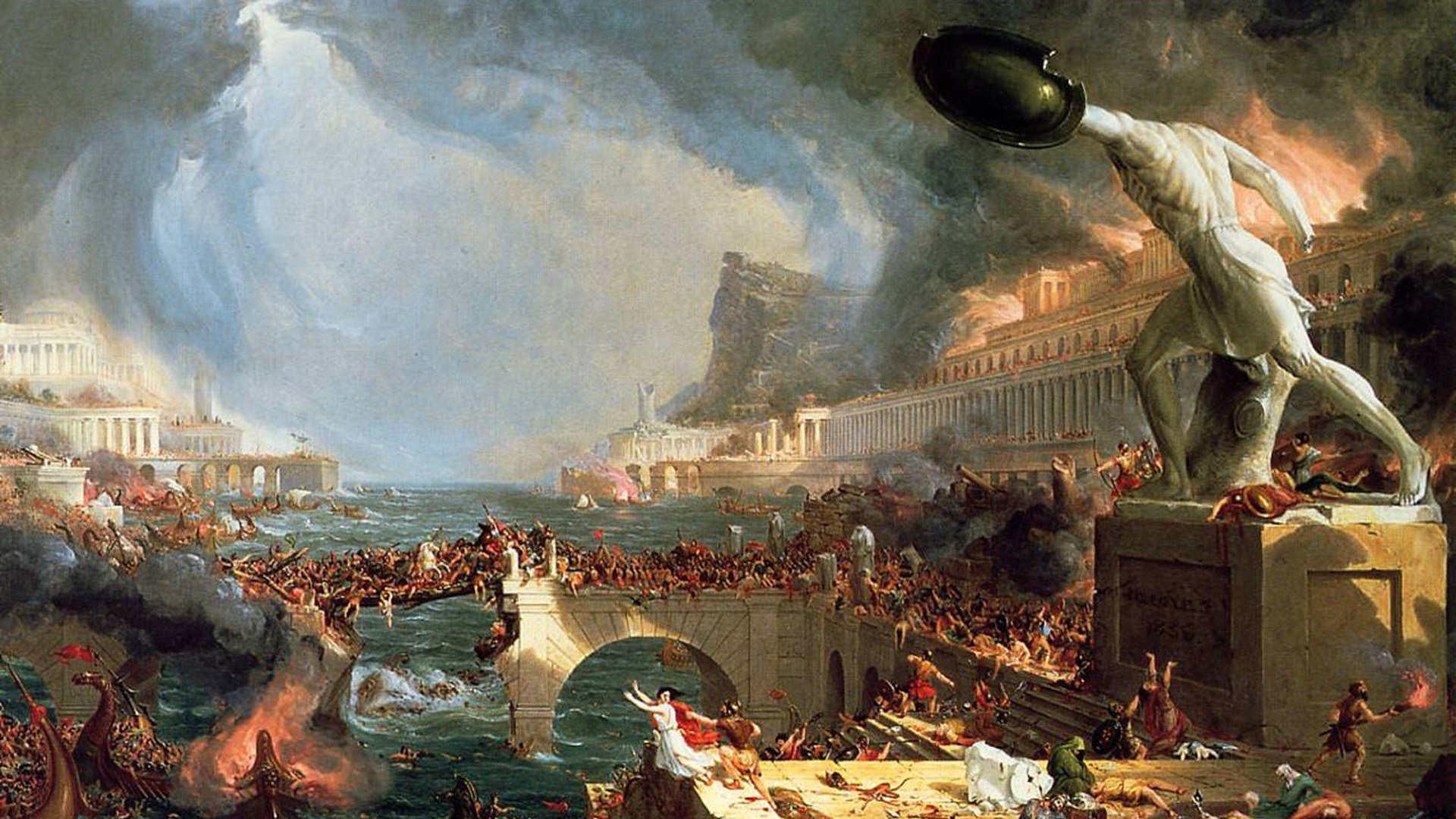Australian scientist Ian Plimer has written that “we must be the first generation of humans to be afraid of a warming climate”. Plimer isn’t wrong: there’s a reason wealthy Europeans flocked to warmer climates, especially for their health. The study of history shows that cooling climates are invariably correlated with dearth, misery and death.
Never more so than in 536 AD.
In Europe, “It was the beginning of one of the worst periods to be alive, if not the worst year,” says Michael McCormick, a historian and archaeologist who chairs the Harvard University Initiative for the Science of the Human Past.
And not just in Europe. Asia and the Middle East were also affected. Its effects were recorded in China. As far away as Mesoamerica, the collapse of the largest city in the Americas, Teotihuacan is also traced to the 6th century.
Competitors for “worst times to be alive” aren’t exactly lacking. 1349, for instance: the year the Black Death inflicted a real-life “Thanos snap” on Europe, wiping out half the population in the blink of an eye. Or the “Iron Century” in the 10th century. But 536 really was a doozy.
A mysterious fog plunged Europe, the Middle East, and parts of Asia into darkness, day and night—for 18 months. “For the sun gave forth its light without brightness, like the moon, during the whole year,” wrote Byzantine historian Procopius. Temperatures in the summer of 536 fell 1.5°C to 2.5°C, initiating the coldest decade in the past 2300 years. Snow fell that summer in China; crops failed; people starved. The Irish chronicles record “a failure of bread from the years 536–539.” Then, in 541, bubonic plague struck the Roman port of Pelusium, in Egypt. What came to be called the Plague of Justinian spread rapidly, wiping out one-third to one-half of the population of the eastern Roman Empire and hastening its collapse, McCormick says.
According to Roman statesman Cassiodorus, the sun’s rays were feeble and bluish-coloured, and cast no shadows even at noon. Cassiodorus also alluded to widespread famine. In Peru, there was prolonged drought.
So, what caused this dramatic and catastrophic cooling?
An ultraprecise analysis of ice from a Swiss glacier by a team led by McCormick and glaciologist Paul Mayewski at the Climate Change Institute of The University of Maine (UM) in Orono has fingered a culprit. At a workshop at Harvard this week, the team reported that a cataclysmic volcanic eruption in Iceland spewed ash across the Northern Hemisphere early in 536. Two other massive eruptions followed, in 540 and 547. The repeated blows, followed by plague, plunged Europe into economic stagnation that lasted until 640, when another signal in the ice—a spike in airborne lead—marks a resurgence of silver mining, as the team reports in Antiquity this week.
Another eruption in El Salvador in the same year created the crater lake called Ilopango. Ilopango is believed to have been bigger even than the cataclysmic eruption of Tambora in 1816, which caused the famous “Year without Summer”. Its pyroclastic flows would have instantly killed up to 100,000 people, displaced up to 400,000 more and filled the skies with ash and dust for more than a year.
To Kyle Harper, provost and a medieval and Roman historian at The University of Oklahoma in Norman, the detailed log of natural disasters and human pollution frozen into the ice “give us a new kind of record for understanding the concatenation of human and natural causes that led to the fall of the Roman Empire—and the earliest stirrings of this new medieval economy.”
High-resolution ice core studies, matched against dendritic (tree ring) studies, provide a vivid picture of global cooling events correlated with volcanic eruptions for the past 2500 years. Using lasers, scientists cut 120-micron thick slivers from ice cores, representing just a few days or weeks of snowfall. These high-resolution samples are able to pinpoint volcanic eruptions and even lead pollution from early mining with extraordinary accuracy.
Ice cores from the spring of 536 were found to contain microscopic particles of volcanic glass. Chemical similarities to similar particles found elsewhere, including volcanic rocks in Iceland, convince some scientists of an Icelandic origin. Others are not so sure, pointing to the Americas.
Either way, the winds and weather systems in 536 must have been just right to guide the eruption plume southeast across Europe and, later, into Asia, casting a chilly pall as the volcanic fog “rolled through,” [volcanologist Andrei Kurbatov] says. The next step is to try to find more particles from this volcano in lakes in Europe and Iceland, in order to confirm its location in Iceland and tease out why it was so devastating.
Science
The same ice samples record the rebound from the devastation. In 640, lead particles spiked. Given that silver was smelted from lead, this spike indicates a resurging economy with a concurrent greater demand for silver. The demand for silver, in fact, indicates a scarcity of gold, most likely due to increased demand.
Eight centuries later, though, lead particles (more correctly, their absence) in the ice samples indicate another very bad time. From 1349 to 1353, lead vanishes from the ice: the economy had crashed to a halt. Due to the sudden absence of half of the population, caused by the Black Death.
All in all, 2022 doesn’t look so bad.

